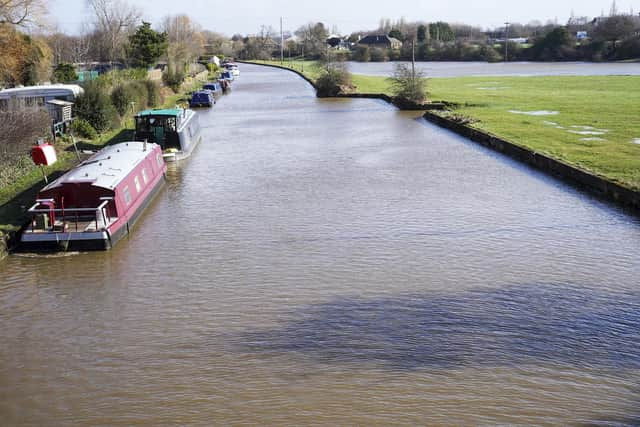Sewage spills: Data map reveals extent of water pollution in Wakefield, Castleford and Knottingley in 2023
and live on Freeview channel 276
A Guardian analysis revealed the River Calder to be the fourth worst in England for sewage spills, with 72 spills per mile of river, amounting to 5,647 total spills.
The River Aire was ranked fifth worst, with 68 spills per mile of river – a total of 4,421.
Advertisement
Hide AdAdvertisement
Hide AdThe Environment Agency has released a data map showing the frequency and duration of storm overflow spills in 2023, recorded by event duration monitors (EDM).


The data map reveals that in 2023, there were 21 storm overflow spills at Wakefield’s Kirkgate Chantry Bridge combined sewer overflow (CSO) –a total of 50 hours into the River Calder via a pumped outlet.
The nearby Thornes Lane Wharfe CSO spilt 43 times for 147.25 hours into the River Calder.
The Caldervale (Wakefield) sewage treatment works spilt 110 times for 1,357.75 hours into the River Calder.
Advertisement
Hide AdAdvertisement
Hide AdThe Park Hill Farm CSO spilt 85 times for 319 hours, also into the River Calder.
In Castleford, the Wheldon Road CSO spilt 63 times for 167.42 hours into the River Aire.
The James Street sewage pumping station spilt twice for 5.5 hours into the River Aire, while the All Saints Church CSO spilt eight times for four hours into the River Aire.
In Knottingley, the March Lane sewage pumping system and storm tank site spilt 55 times for 301.25 hours into the River Aire, and the A1/A645 slip road sanitary sewer overflow spilt 43 times for 107.92 hours into the Aire and Calder Navigation.
Advertisement
Hide AdAdvertisement
Hide AdA Yorkshire Water spokesperson said: “We are committed to improving our region’s rivers and were disappointed about the number of discharges in 2023.
"This increase is due to the wet weather experienced in the 12-month period, which included 11 named storms.
"The weather experienced in the region in 2023 included a very wet summer and prolonged heavy rainfall towards the end of the year, resulting in groundwater infiltration into the sewer network.
“Met Office statistics show 1178mm of rainfall in our area in 2023, the highest level since 2013 and with the second half of the year one of the wettest on record.
Advertisement
Hide AdAdvertisement
Hide Ad"Overflows operate during prolonged or heavy rainfall and multiple storms in close succession can lead to increased discharges due to the storm capacity being used up.
“Our teams worked hard throughout 2023 to reduce discharges as part of our commitment to improve the operation of our network.
"As a result, our modelling indicates investment in our network and changes to our operations since 2021 equate to an improvement of 12,980 discharges when normalised against rainfall.
“Nevertheless, we know there is more to do, and we are making headway with a £180m programme to reduce discharges across the region by April 2025.
Advertisement
Hide AdAdvertisement
Hide Ad"Work is in progress on 62 projects, including some on the Aire and Calder, that will reduce discharges from some of the most frequently operating overflows, with more to follow later in the year.
"This is just the start of a long-term programme to reduce the impact of wastewater on the region’s watercourses and we have submitted plans to OFWAT that outline a further £1.19bn investment in overflow reduction between 2025 and 2030.”